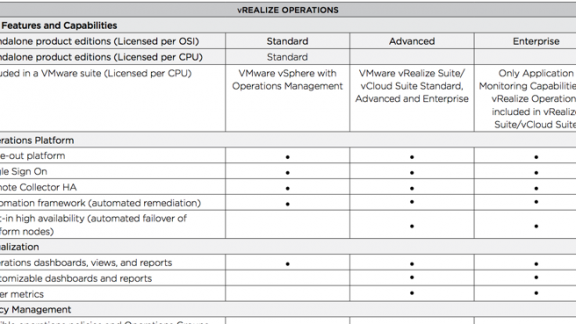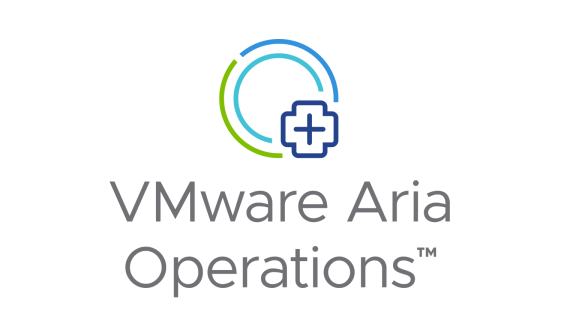By Jennifer DeWaele
This is part of a blog series on VMware vRealize Operations Manager Editions. The series breaks down the key aspects and differentiators between the three vROps Editions (Standard, Advanced, and Enterprise), including the critical components of extensibility and customization. The primary source of extensibility in vRealize Operations comes from Blue Medora’s True Visibility Suite, whose tiers align with the vROps editions.
This is the first blog of the series and will look at the key features of vROps and the areas that differentiate each edition. Upcoming posts will cover the specifics of each edition.
Three Editions: Standard, Advanced, Enterprise
There are three editions to VMware’s vRealize Operations Manager (vROps) and Blue Medora’s True Visibility Suite (TVS). The vROps entry level is named Standard, followed by Advanced, then Enterprise.

Figure 1: The top sections in the edition comparison in the VMware vROps Datasheet.
Similarly, the True Visibility Suite is broken down into the same tiers: Standard, Advanced, and Enterprise. While the vROps editions are separated by feature sets, TVS is simply split by integrations.

Figure 2: The Blue Medora True Visibility Suite editions and integrations.
Key Features
Scale-out platform is one of the important features that is included in every edition of vROps and enables the tool to grow with your organization. The powerful new architecture in vROps 6.x lets you monitor increasing large environments, which is critical if you plan on using management packs (like those in TVS) to bring infrastructure visibility into vROps. The updated architecture was designed to be elastic, giving you the ability to add “nodes” which effectively split the data storage and processing load of vROps and management packs across servers.
Operations dashboards, views, and reports are another key feature in vROps available at every edition. A key differentiator, however, is that the ability to create and customize your own dashboards, views, and reports is only available in the Advanced and Enterprise editions of vROps. Even though you can’t create your own dashboards in vROps Standard, the Management Packs in TVS Standard include integration-specific dashboards you can use to gain insight into your compute and EMC storage layers.
 Figure 3: An example of the EMC VMAX Health Investigation dashboard, part of the EMC VMAX Management Pack in TVS.
Figure 3: An example of the EMC VMAX Health Investigation dashboard, part of the EMC VMAX Management Pack in TVS.
Policy Management and Performance Monitoring and Analytics are two other critical features found in vROps that give you visibility and control of your environment. Every edition of vROps includes the ability to use operations groups, implement role-based access, monitor vSphere and other resource health, use dynamic thresholds, take advantage of Smart Alerts, and much more.
 Figure 4: The Access Control page allows you to create user roles in vROps.
Figure 4: The Access Control page allows you to create user roles in vROps.
Basic Capacity Management is also included in each vROps Edition, letting you model capacity what-if scenarios and optimize resources. Advanced functionality is available at the Advanced and Enterprise tiers of vROps.
Key Edition Differentiators
Without spoiling the upcoming posts in the series, there are some key features and functionality that are available exclusively at higher editions. Some include Change, Configuration, and Compliance Management, Management Pack availability, Application and Database Monitoring, and Visualization customization. Stay tuned for the upcoming posts to learn more!
Note: Blue Medora True Visibility Suite requires additional licensing.









